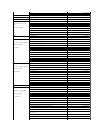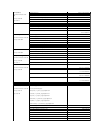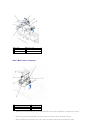
G
G — gravity — A measurement of weight and force.
GB — gigabyte — A unit of data that equals 1024 MB (1,073,741,824 bytes) and measures drive storage capacity.
GHz — gigahertz — A measurement of frequency that equals one thousand million Hz, or one thousand MHz.
graphics accelerator — A type of specialized video processor that boosts graphics performance.
graphics mode — A video mode that can be defined as x horizontal pixels by y vertical pixels by z colors. Graphics modes can display an unlimited variety of
shapes and fonts.
H
hard drive — A drive that reads and writes data on a hard disk. The terms hard drive and hard disk are often used interchangeably.
heat sink — A metal plate on some processors that helps dissipate heat.
hibernate mode — A power management feature that saves everything in memory to a reserved space on the hard drive, and then turns off the computer.
When you restart the computer, the memory information that was saved to the hard drive is automatically restored.
Hz — hertz — A unit of frequency measurement that equals 1 cycle per second. Computers and electronic devices are often measured in kilohertz (kHz),
megahertz (MHz), gigahertz (GHz), or terahertz (THz).
I
IEEE 1394 — Institute of Electrical and Electronics Engineers, Inc. — A high performance serial bus used to connect IEEE 1394-compatible devices, such as
digital cameras and DVD players, to the computer.
I/O — input/output — An operation or device that enters and extracts data from your computer. Keyboards and printers are I/O devices.
IR sensor — infrared sensor — A port that allows you to transfer data between the computer and IR-compatible devices without using a cable connection.
IRQ — interrupt request — An electronic pathway assigned to a specific device so that the device can communicate with the processor. Each device connection
must be assigned an IRQ. For example, the first serial port in your computer is typically assigned to IRQ4. Although two devices can share the same IRQ
assignment, you cannot operate both devices simultaneously.
K
KB — kilobyte — A unit of data that equals 1,024 bytes but is often referred to as 1,000 bytes.
keyboard shortcut — A command requiring you to press multiple keys at the same time. Also referred to as key combination.
kg — kilogram — A unit measuring mass that equals 1,000 grams.
L
LAN — local area network — A computer network covering a small area. A LAN usually is confined to a building or a few nearby buildings. A LAN can be
connected to another LAN over any distance via telephone lines and radio waves to form a wide area network (WAN).
LOM — LAN on motherboard — A system board with integrated networking silicon, which eliminates the need for an add-in network card and enables
advanced management technologies requiring signals to and from the system board.
M
MB — megabyte — A storage unit equal to 1,048,576 bytes; however, when used to refer to hard drive storage, the term is often rounded to mean 1,000,000
bytes.
MB/sec — megabytes per second — One million bytes per second. This measurement is typically used for disk and tape transfer ratings.
Mbps — megabits per second — One million bits per second. This measurement is typically used for transmission speeds for networks and modems.
memory — A temporary data storage area inside your computer. Because the data in memory is not permanent, Dell recommends that you frequently save
your files while you are working on them, and always save your files before you shut down the computer. Your computer can contain several different forms of
memory, such as RAM, ROM, and video memory. Frequently, the word memory is used as a synonym for RAM.
memory address — A specific location where data is temporarily stored in RAM.
memory module — A small circuit board containing memory chips, which connects to the system board.


















